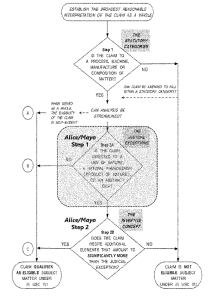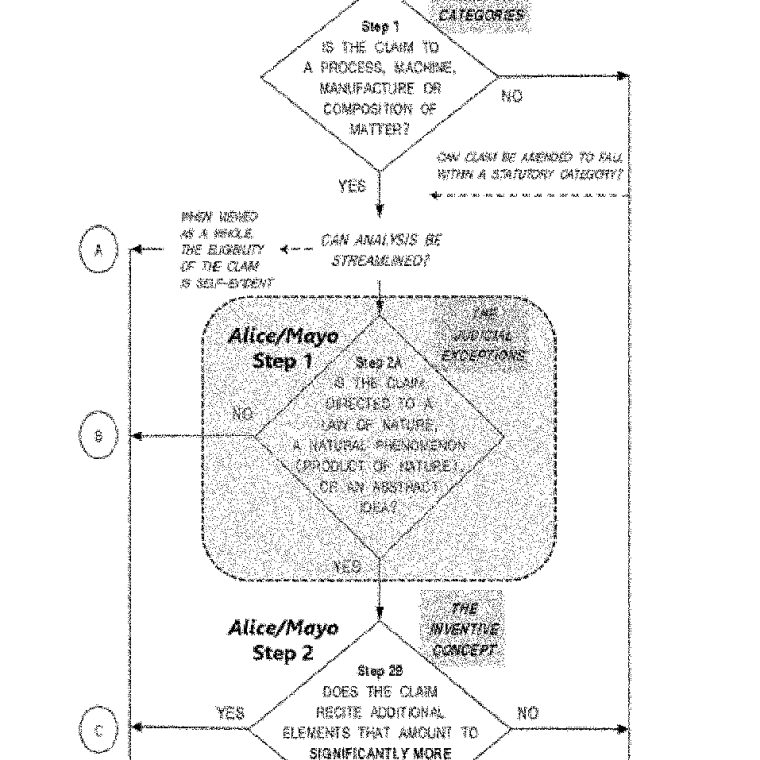In the ever-changing realm of patent law, the recent Federal Circuit decision in Broadband iTV, Inc. v. Amazon.com, Inc. (2024) marks a significant development in the patentability of user interface inventions. This ruling, which affirmed a district court’s summary judgment of patent ineligibility, provides crucial insights into the application of the Alice framework and its implications for inventors in the software and user interface domains.
The legal battle between Broadband iTV (BBiTV) and Amazon stems from a complex web of patents related to video-on-demand technology and electronic programming guides. In October 2020, BBiTV filed a lawsuit against Amazon in the Western District of Texas, alleging infringement of five patents. These patents, dating back to the early 2000s, cover various aspects of interactive television services and personalized content recommendations. Interestingly, this wasn’t BBiTV’s first foray into patent litigation; the company had previously asserted related patents against other tech giants, with most defendants opting to settle. Amazon, however, chose to fight the claims, leading to a protracted legal dispute that culminated in a summary judgment ruling in Amazon’s favor. The case gained particular attention due to its potential implications for the broader streaming industry and the ongoing debate over the patentability of software-based innovations. With Amazon’s Prime Video service at stake, the outcome of this case carried significant weight for both the e-commerce giant and the future of video streaming technology patents.
The Alice Framework and Its Impact on Software Patents
The Supreme Court’s 2014 decision in Alice Corp. v. CLS Bank established a two-step test for determining patent eligibility under 35 U.S.C. § 101. This test has had a profound impact on software patents, including those related to user interface inventions:
- Determine whether the claims at issue are directed to a patent-ineligible concept (such as an abstract idea).
- If so, consider whether the claim’s elements, individually or in combination, transform the nature of the claim into a patent-eligible application.
Since Alice, courts have grappled with applying this test to various technologies, particularly in the realm of software and user interface inventions. The Broadband iTV decision provides a fresh perspective on how the Federal Circuit is interpreting and applying the Alice framework in the context of electronic programming guides and user interfaces.
Broadband iTV v. Amazon: A Closer Look
In Broadband iTV, the Federal Circuit affirmed the Western District of Texas’s grant of summary judgment, finding five patents owned by Broadband iTV ineligible under § 101. These patents were directed to electronic programming guides for televisions, a technology that falls squarely within the realm of user interface inventions.
Alice Step One Analysis

The court grouped the first four patents together, finding that their claims were directed to the abstract idea of “receiving hierarchical information and organizing the display of video content.” For the fifth patent, the court determined that the claims were directed to the abstract idea of “collecting and using a viewer’s video history to suggest categories of video content.”
This analysis demonstrates the court’s willingness to characterize user interface inventions at a high level of abstraction, potentially making it more challenging for such inventions to survive Alice step one.
Alice Step Two Analysis
In applying step two of the Alice framework, the court found that none of the claimed elements, individually or in combination, transformed the nature of the claims into patent-eligible subject matter. The court rejected arguments that the claims provided technical improvements, finding instead that they merely applied abstract ideas using generic computer components.
This stringent application of Alice step two suggests a high bar for user interface inventions to demonstrate the “inventive concept” necessary to confer patent eligibility.
Distinguishing Core Wireless: A Shift in User Interface Patent Eligibility?
The Broadband iTV decision stands in contrast to the Federal Circuit’s 2018 ruling in Core Wireless Licensing S.A.R.L. v. LG Electronics, Inc., which found certain user interface claims patent-eligible under § 101. In Core Wireless, the court held that claims directed to a specific manner of displaying a limited set of information to the user were not abstract, but rather were directed to an improved user interface for electronic devices.
The divergence between these two decisions raises important questions about the patentability of user interface inventions:
Specificity and Technical Improvement
In Core Wireless, the court emphasized the specificity of the claimed user interface improvements and their technical benefits. The Broadband iTV decision, however, suggests a higher threshold for demonstrating such specificity and technical improvement in user interface inventions.
Level of Abstraction
The level at which the court characterizes the claims appears to be crucial. In Core Wireless, the court viewed the claims as directed to a specific improvement in the functionality of electronic devices. In contrast, the Broadband iTV court characterized the claims more broadly as organizing and displaying information, which it deemed abstract.
Generic Computer Implementation
Both decisions scrutinize the use of generic computer components. However, the Broadband iTV decision seems to apply a more stringent standard in assessing whether the implementation goes beyond conventional computer functionality.
Implications for Inventors and Patent Practitioners
The Broadband iTV decision, when compared to Core Wireless, signals potential challenges for inventors seeking patents on user interface inventions. Moving forward, inventors and patent practitioners should consider the following:
- Emphasize Technical Specificity: Claims should be drafted to highlight specific technical improvements in user interface functionality, avoiding broad, abstract characterizations.
- Detail Technical Benefits: Patent applications should clearly articulate the technical benefits of the user interface inventions, demonstrating how they solve specific technological problems.
- Avoid Generic Implementations: Where possible, claims should incorporate non-generic computer elements or unconventional combinations of components.
- Focus on User Experience Improvements: While not sufficient on its own, demonstrating tangible improvements to user experience may bolster arguments for patent eligibility.
- Consider Alternative Claim Strategies: Drafting claims from multiple perspectives (e.g., method, system, and computer-readable medium) may provide additional avenues for patent eligibility.
Protecting User Interface Inventions with Design Patents
In light of the challenges facing utility patents for user interface inventions, design patents offer an alternative avenue for protection. Design patents protect the ornamental design of an article of manufacture, which can include the visual aspects of a graphical user interface.
Benefits of Design Patents for UI Elements
- Lower Eligibility Hurdle: Design patents are not subject to the same abstract idea analysis as utility patents, potentially making them easier to obtain for user interface elements.
- Faster Prosecution: Design patent applications typically move through the USPTO more quickly than utility patents.
- Complementary Protection: Design patents can be used in conjunction with utility patents to create a more comprehensive protection strategy.
Limitations of Design Patent Protection
- Limited Scope: Design patents only protect the ornamental aspects of a design, not its functional features.
- Shorter Term: Design patents last for 15 years from the date of grant, compared to 20 years from the filing date for utility patents.
- Narrower Protection: Changes to the design may fall outside the scope of protection, potentially allowing competitors to design around the patent more easily.
The Future of User Interface Inventions in Patent Law
As the law continues to evolve, it will be crucial to monitor future decisions for further clarification on the patentability of user interface inventions. The tension between promoting innovation in user interface design and preventing the monopolization of abstract ideas remains a central challenge in patent law.Inventors in the field of user interface technology must navigate a complex and somewhat uncertain legal landscape. By focusing on technical specificity, clear articulation of benefits, and careful claim drafting, inventors can maximize their chances of securing patent protection for their user interface inventions in this post-Alice, post-Broadband iTV era.
Conclusion
The Broadband iTV decision represents a potential shift in the patent eligibility landscape for user interface inventions. While it does not entirely foreclose the possibility of obtaining patents in this area, it does suggest a more challenging path forward. Inventors and practitioners must be increasingly diligent in crafting patent applications that clearly demonstrate technical improvements and avoid abstract characterizations.A comprehensive strategy for protecting user interface inventions should consider both utility and design patents, as well as other forms of intellectual property protection such as copyrights and trademarks. By leveraging multiple forms of protection, inventors can create a robust shield for their innovative user interface designs.
As the field of user interface inventions continues to evolve rapidly, navigating the complex landscape of patent eligibility and protection strategies requires specialized expertise. Don’t risk losing valuable intellectual property rights due to inadequate protection or poorly crafted patent applications. Contacting an experienced user interface patent attorney who understands the nuances of both utility and design patents in the context of UI innovations. Our team of skilled attorneys can help you:
- Assess the patentability of your user interface inventions
- Develop a comprehensive IP strategy tailored to your specific UI innovations
- Draft robust patent applications that emphasize technical improvements and overcome eligibility challenges
- Navigate the patent prosecution process efficiently
- Enforce your UI patents and defend against potential infringement
Don’t leave the protection of your valuable user interface inventions to chance. Contact our experienced team today for a consultation and take the first step towards securing strong, enforceable patent protection for your UI innovations.


